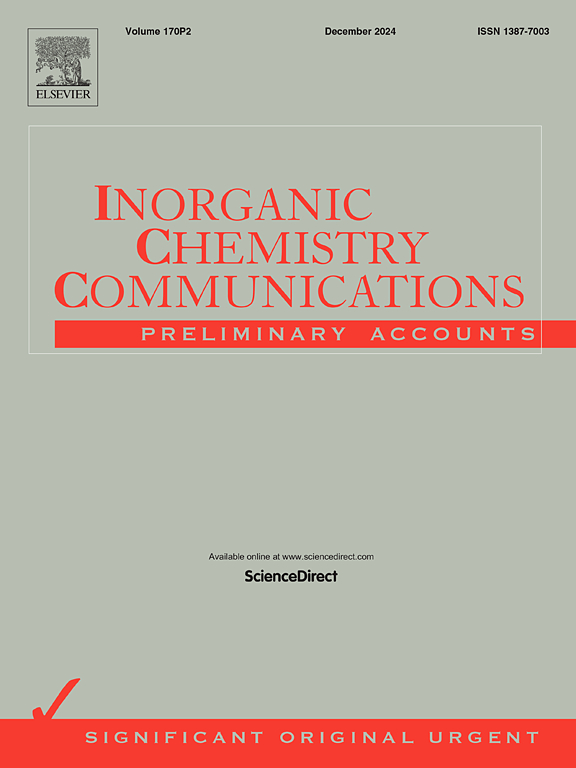以NiCo2O4为正极的罗望子壳衍生活性炭复合材料制备高性能非对称超级电容器
IF 4.4
3区 化学
Q1 CHEMISTRY, INORGANIC & NUCLEAR
引用次数: 0
摘要
研究了水热法制备NiCo2O4/AC。采用罗望子壳衍生活性炭修饰NiCo2O4纳米棒,制备了导电率高、比表面积大的复合电极。NiCo2O4提高了伪电容,而活性炭提供了一个多孔结构,促进了离子和电子的快速传递。活性炭的片状形态作为离子缓冲剂,缩短了扩散途径。该复合电极在非对称电容器中表现出优异的电化学性能。NiCo2O4/AC复合电极在1ag−1时的比电容为1833 Fg−1。NiCo2O4/AC//AC器件的工作电压窗为0 ~ 1.6,功率密度为2244 W kg−1,能量密度为40.6 Whkg−1。这些结果突出了NiCo2O4/AC复合材料在实际储能应用中的前景。本文章由计算机程序翻译,如有差异,请以英文原文为准。

Tamarind shell-derived activated carbon composite with NiCo2O4 as a positive electrode for high-performance asymmetric supercapacitors
This study presents the synthesis of a NiCo2O4/AC by hydrothermal technique. NiCo2O4 nanorods were decorated with tamarind shell-derived activated carbon to create a composite electrode with enhanced conductivity and high surface area. The NiCo2O4 improves pseudo capacitance, while the activated carbon provides a porous structure that facilitates fast ion and electron transport. The activated carbon’s sheet-like morphology acts as an ion buffer, shortening diffusion pathways. The composite electrode was characterized and exhibited excellent electrochemical performance in asymmetric capacitors. The NiCo2O4/AC composite electrode exhibits a specific capacitance of 1833 Fg−1 at 1 Ag−1. The constructed NiCo2O4/AC//AC device demonstrates an operating voltage window of 0 –1.6, providing a substantial energy density of 40.6 Whkg−1 at a power density of 2244 W kg−1. These outcomes highlight the promise of the NiCo2O4/AC composite for practical energy storage applications.
求助全文
通过发布文献求助,成功后即可免费获取论文全文。
去求助
来源期刊

Inorganic Chemistry Communications
化学-无机化学与核化学
CiteScore
5.50
自引率
7.90%
发文量
1013
审稿时长
53 days
期刊介绍:
Launched in January 1998, Inorganic Chemistry Communications is an international journal dedicated to the rapid publication of short communications in the major areas of inorganic, organometallic and supramolecular chemistry. Topics include synthetic and reaction chemistry, kinetics and mechanisms of reactions, bioinorganic chemistry, photochemistry and the use of metal and organometallic compounds in stoichiometric and catalytic synthesis or organic compounds.
 求助内容:
求助内容: 应助结果提醒方式:
应助结果提醒方式:


